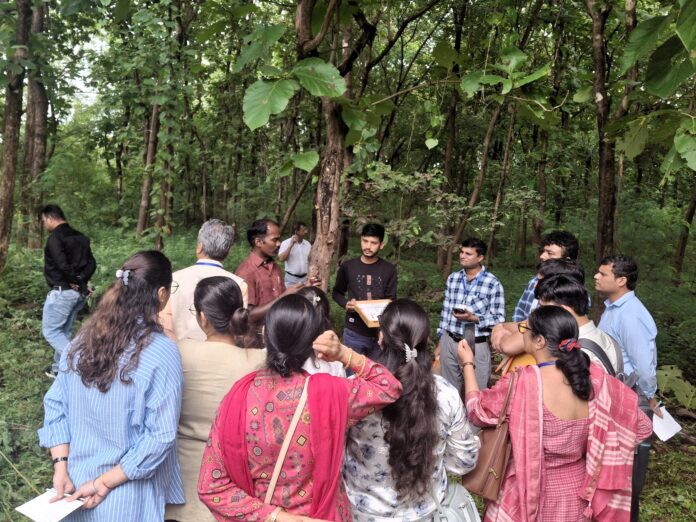The Giant Wood Spider. Nephila pilipes. Female Biased Sexual dimorphism.
Nephila pilipes is a commonly found orb-web spider inhabiting tropical forests of south, southeast and East Asia, Wallacea, New Guinea, parts of Australia, Solomon Islands and Vannatu. It is commonly also known as the Giant Wood Spider. This specimen of a female spider was recorded at the Tropical Forestry Research Institute, Jabalpur, M.P., India in September 2025 within a forest.
The males are almost 7 to 10 times smaller than the females. The average adult body size ranges from 30.4 mm in females to 4.4 mm in males.
Male spiders deposit a gelatinous secretion into the female genitalia soon after mating. This hardens later into a plug which prevents other male from mating and ensures parenthood to the successful male. With a mating plug, male spiders ensure that only the male who inserts the plug post coitus will be the father of the resulting offspring.
Large size in females is the evolutionary response to these plugs as the larger sizes lead to these plugs being too thin to effectively seal the genitalia and allows the females to lay more eggs at time before they are plugged by males.
Sexuality in Nephila pilipes has been regarded as an ideal expression of extreme female-biased sexual dimorphism where the females exhibit considerably larger sizes than the males. Males in Nephila are commensals in female webs and tend to aggregate in certain (though not all) female webs. The optimal female size hypothesis suggests that male spiders may generally occupy webs of intermediate-size females rather than larger, previously mated or smaller virgin females. While virgin females in good physical condition would make a better option for maximising reproductive success, but the longer potential mating period can lead to male-male and or sperm competition. Bigger sized older females may have previously mated resulting in shared paternity, low receptivity or even out right aggression from plugged females often culminating in sexual cannibalism where the male is eaten by the female.
The web clustering hypothesis on aggregation in males may suggest that males may tend to aggregate in female webs close together compared to those webs which are removed from each other. This positioning near multiple, female webs maximises reproductive opportunities.
Bites of N. pilipes may cause acute symptoms such as muscle pain, feeling of tightness and reflex related problems.
©Srimaa Communication
Credits- Dr. Yashpal Singh, Mrs. Neena Singh, Mr. Manoj Kumar Yadav
